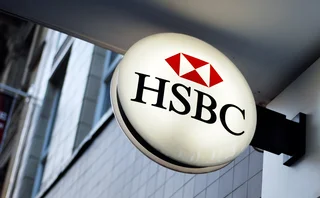

FX primary venues seek reversal of fortunes
EBS and Refinitiv fight to restore market share – but bilateral trading may be too entrenched, dealers say
Everyone can admire a good comeback, whether or not you like the result. Take the New England Patriots’ improbable victory from 28-3 in Superbowl LI or Ben Stokes’s Ashes-saving innings at Headingley in 2019.
Now, the two interbank trading venues for spot foreign exchange, EBS Market and Refinitiv Matching, are hoping for their own redemption story after years of dwindling volumes and questions
Only users who have a paid subscription or are part of a corporate subscription are able to print or copy content.
To access these options, along with all other subscription benefits, please contact info@risk.net or view our subscription options here: http://subscriptions.risk.net/subscribe
You are currently unable to print this content. Please contact info@risk.net to find out more.
You are currently unable to copy this content. Please contact info@risk.net to find out more.
Copyright Infopro Digital Limited. All rights reserved.
As outlined in our terms and conditions, https://www.infopro-digital.com/terms-and-conditions/subscriptions/ (point 2.4), printing is limited to a single copy.
If you would like to purchase additional rights please email info@risk.net
Copyright Infopro Digital Limited. All rights reserved.
You may share this content using our article tools. As outlined in our terms and conditions, https://www.infopro-digital.com/terms-and-conditions/subscriptions/ (clause 2.4), an Authorised User may only make one copy of the materials for their own personal use. You must also comply with the restrictions in clause 2.5.
If you would like to purchase additional rights please email info@risk.net
More on Markets
The future of fixed income
Apac investors’ use of fixed income products, the fast-track evolution of the UBS fixed income proposition and the innovations likely to be seen by 2030
Unlocking opportunities in the SRT boom
Exploring the opportunities emerging in SRTs, also considering broader SRT developments and structural innovations
Franklin Templeton dethrones MSIM as top FX options user
Counterparty Radar: MSIM continued to cut RMB positions in Q3, while Franklin Templeton increased G10 trades
HSBC loses FX forwards market share with EU funds
Counterparty Radar: UK bank reported 6% drop in notional volumes with Ucits funds in H2 last year
Franklin Templeton steps back into FX options
Former biggest user of the instrument among US mutual funds returns with $7.6bn of USD/JPY strategies
Equity vol convexity selling gains momentum
Risky hedging strategy is attracting interest but can investors learn from past convexity blow-ups?
Continued decline of the one-stop shop
Dealer Rankings 2024: Only two banks make the top 10 across all rankings tables – others have focused on vertical dominance
Often fluid. Not always liquid
Dealer Rankings 2024: On the buy side and the sell side, the make-up and depth of OTC mini-markets can change rapidly








